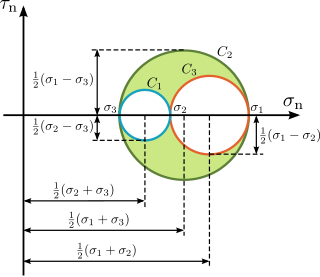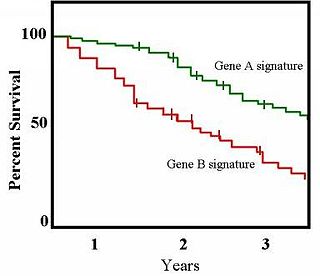Cavg is the average concentration of a drug in the central circulation during a dosing interval in steady state. It is calculated by
where is the area under the curve and the dosing interval.
Cavg is the average concentration of a drug in the central circulation during a dosing interval in steady state. It is calculated by
where is the area under the curve and the dosing interval.
In physics, power is the amount of energy transferred or converted per unit time. In the International System of Units, the unit of power is the watt, equal to one joule per second. In older works, power is sometimes called activity. Power is a scalar quantity.
In mathematics, a topological space is, roughly speaking, a geometrical space in which closeness is defined but cannot necessarily be measured by a numeric distance. More specifically, a topological space is a set whose elements are called points, along with an additional structure called a topology, which can be defined as a set of neighbourhoods for each point that satisfy some axioms formalizing the concept of closeness. There are several equivalent definitions of a topology, the most commonly used of which is the definition through open sets, which is easier than the others to manipulate.

In mathematics, an open set is a generalization of an open interval in the real line.
In mathematics, a base (or basis; pl.: bases) for the topology τ of a topological space (X, τ) is a family of open subsets of X such that every open set of the topology is equal to the union of some sub-family of . For example, the set of all open intervals in the real number line is a basis for the Euclidean topology on because every open interval is an open set, and also every open subset of can be written as a union of some family of open intervals.
Tau is the nineteenth letter of the Greek alphabet, representing the voiceless dental or alveolar plosive IPA:[t]. In the system of Greek numerals, it has a value of 300.
In physics, in particular in special relativity and general relativity, a four-velocity is a four-vector in four-dimensional spacetime that represents the relativistic counterpart of velocity, which is a three-dimensional vector in space.

In relativity, proper time along a timelike world line is defined as the time as measured by a clock following that line. The proper time interval between two events on a world line is the change in proper time, which is independent of coordinates, and is a Lorentz scalar. The interval is the quantity of interest, since proper time itself is fixed only up to an arbitrary additive constant, namely the setting of the clock at some event along the world line.

Mohr's circle is a two-dimensional graphical representation of the transformation law for the Cauchy stress tensor.

In system analysis, among other fields of study, a linear time-invariant (LTI) system is a system that produces an output signal from any input signal subject to the constraints of linearity and time-invariance; these terms are briefly defined below. These properties apply (exactly or approximately) to many important physical systems, in which case the response y(t) of the system to an arbitrary input x(t) can be found directly using convolution: y(t) = (x ∗ h)(t) where h(t) is called the system's impulse response and ∗ represents convolution (not to be confused with multiplication). What's more, there are systematic methods for solving any such system (determining h(t)), whereas systems not meeting both properties are generally more difficult (or impossible) to solve analytically. A good example of an LTI system is any electrical circuit consisting of resistors, capacitors, inductors and linear amplifiers.

In engineering, shear strength is the strength of a material or component against the type of yield or structural failure when the material or component fails in shear. A shear load is a force that tends to produce a sliding failure on a material along a plane that is parallel to the direction of the force. When a paper is cut with scissors, the paper fails in shear.

The Kaplan–Meier estimator, also known as the product limit estimator, is a non-parametric statistic used to estimate the survival function from lifetime data. In medical research, it is often used to measure the fraction of patients living for a certain amount of time after treatment. In other fields, Kaplan–Meier estimators may be used to measure the length of time people remain unemployed after a job loss, the time-to-failure of machine parts, or how long fleshy fruits remain on plants before they are removed by frugivores. The estimator is named after Edward L. Kaplan and Paul Meier, who each submitted similar manuscripts to the Journal of the American Statistical Association. The journal editor, John Tukey, convinced them to combine their work into one paper, which has been cited more than 34,000 times since its publication in 1958.

In materials science and engineering, the yield point is the point on a stress-strain curve that indicates the limit of elastic behavior and the beginning of plastic behavior. Below the yield point, a material will deform elastically and will return to its original shape when the applied stress is removed. Once the yield point is passed, some fraction of the deformation will be permanent and non-reversible and is known as plastic deformation.
In statistics, the Kendall rank correlation coefficient, commonly referred to as Kendall's τ coefficient, is a statistic used to measure the ordinal association between two measured quantities. A τ test is a non-parametric hypothesis test for statistical dependence based on the τ coefficient. It is a measure of rank correlation: the similarity of the orderings of the data when ranked by each of the quantities. It is named after Maurice Kendall, who developed it in 1938, though Gustav Fechner had proposed a similar measure in the context of time series in 1897.

Sediment transport is the movement of solid particles (sediment), typically due to a combination of gravity acting on the sediment, and the movement of the fluid in which the sediment is entrained. Sediment transport occurs in natural systems where the particles are clastic rocks, mud, or clay; the fluid is air, water, or ice; and the force of gravity acts to move the particles along the sloping surface on which they are resting. Sediment transport due to fluid motion occurs in rivers, oceans, lakes, seas, and other bodies of water due to currents and tides. Transport is also caused by glaciers as they flow, and on terrestrial surfaces under the influence of wind. Sediment transport due only to gravity can occur on sloping surfaces in general, including hillslopes, scarps, cliffs, and the continental shelf—continental slope boundary.
Location estimation in wireless sensor networks is the problem of estimating the location of an object from a set of noisy measurements. These measurements are acquired in a distributed manner by a set of sensors.
Cmin is a term used in pharmacokinetics for the minimum blood plasma concentration reached by a drug during a dosing interval, which is the time interval between administration of two doses. This definition is slightly different from Ctrough, the concentration immediately prior to administration of the next dose. Cmin is the opposite of Cmax, the maximum concentration that the drug reaches. Cmin must be above certain thresholds, such as the minimum inhibitory concentration (MIC), to achieve a therapeutic effect.
In the field of pharmacokinetics, the area under the curve (AUC) is the definite integral of the concentration of a drug in blood plasma as a function of time. In practice, the drug concentration is measured at certain discrete points in time and the trapezoidal rule is used to estimate AUC. In pharmacology, the area under the plot of plasma concentration of a drug versus time after dosage gives insight into the extent of exposure to a drug and its clearance rate from the body.
In statistics, Somers’ D, sometimes incorrectly referred to as Somer’s D, is a measure of ordinal association between two possibly dependent random variables X and Y. Somers’ D takes values between when all pairs of the variables disagree and when all pairs of the variables agree. Somers’ D is named after Robert H. Somers, who proposed it in 1962.
In pharmacokinetics, the drug accumulation ratio (Rac) is the ratio of accumulation of a drug under steady state conditions as compared to a single dose. The higher the value, the more the drug accumulates in the body. An Rac of 1 means no accumulation.
In quantum mechanics, a quantum speed limit (QSL) is a limitation on the minimum time for a quantum system to evolve between two distinguishable (orthogonal) states. QSL theorems are closely related to time-energy uncertainty relations. In 1945, Leonid Mandelstam and Igor Tamm derived a time-energy uncertainty relation that bounds the speed of evolution in terms of the energy dispersion. Over half a century later, Norman Margolus and Lev Levitin showed that the speed of evolution cannot exceed the mean energy, a result known as the Margolus–Levitin theorem. Realistic physical systems in contact with an environment are known as open quantum systems and their evolution is also subject to QSL. Quite remarkably it was shown that environmental effects, such as non-Markovian dynamics can speed up quantum processes, which was verified in a cavity QED experiment.